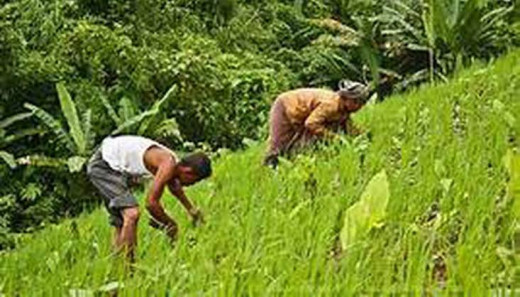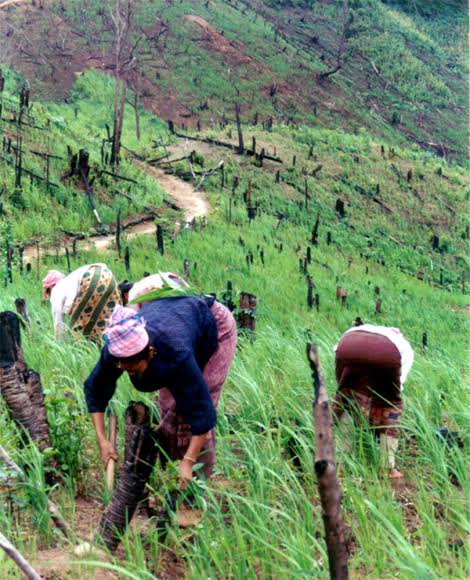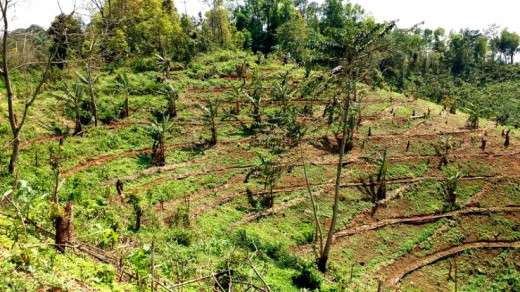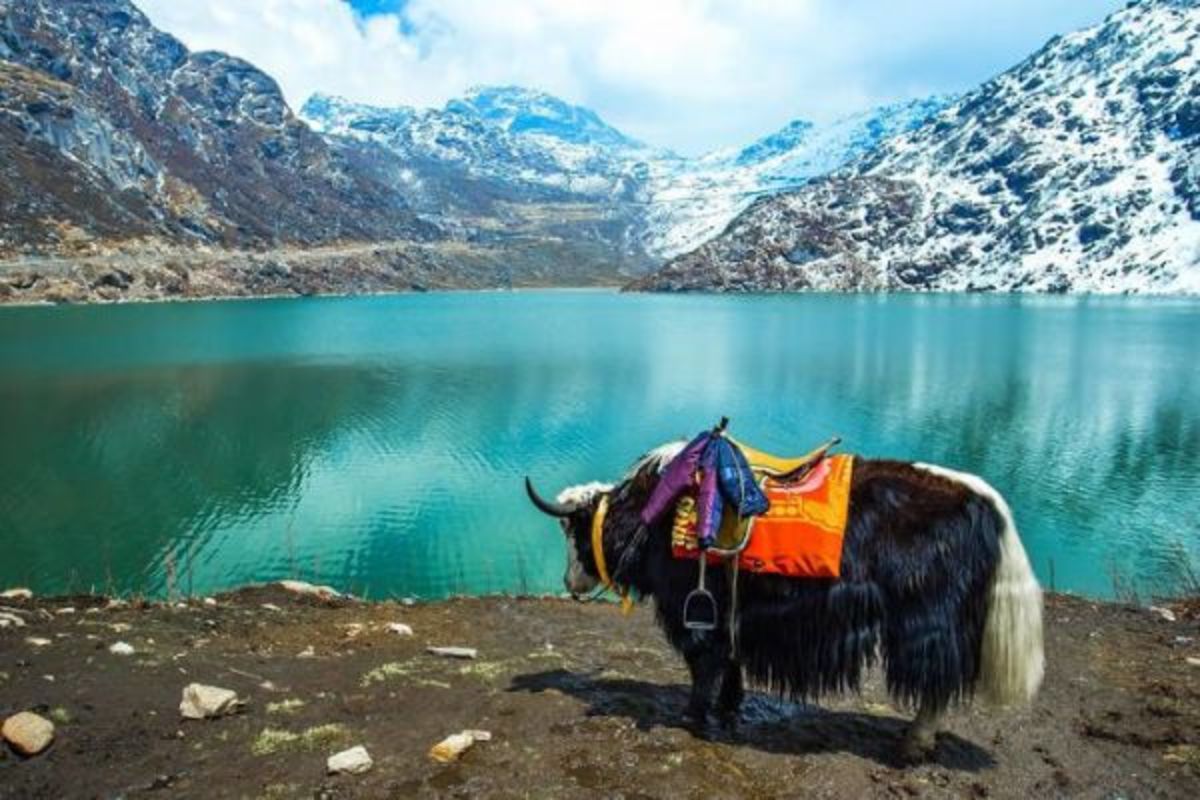North-Eastern Indian Farming—Prospects of Organic Products Supply to World Markets
Current Scenario of Organic Farming in India
Organic agriculture or organic farming is a holistic production and it enhances agro-ecosystem health, including biodiversity, biological cycles and soil biological activity. It lay emphasis on the use of management practices in preferences to the use of farm inputs, taking into account that regional conditions require locally adapted systems.
Though Indian farmers are practising organic farming for several thousand years, yet in the year 1900, the word organic farming was introduced in India by a British agronomist named Albert Howard in North India. As we know India is endowed with various types of naturally viable organic forms of nutrients across different regions of the country. It contributes to the organic cultivation of crops. India is classified into 21 different agro-ecological zones based on temperatures, soil conditions and rainfall. Hence, each zone has its own advantage of the production of different products. The tea, spices and fruits are grown in the North-Eastern region, cotton and herbs in central and western regions, spices and coffee in Southern region, rice, wheat and fruits in the northern region.
If we talk about the market potential of the crops in India, for the domestic market, fruits, vegetables, rice and wheat have high demand, whereas, tea, rice, fruits, vegetables, cotton, herbs and spices have a huge demand for export.
It is well said that “ Eating Organic isn’t a Trend, It’s a return to traditional”
Crops from North-East India and its Supply Worldwide
Darjeeling tea, Assam tea and lemon are some of the products familiar to the world markets, originating from this region. Geographical indicator principles in these products unique in the world.

Do you know what is Geographical Indicator principles?
Major Global Markets for Indian Organic Food Products
Europe and North America are the major markets for organic products. India mainly exports organically processed food products, organic rice, beverages and other cereals and millets to USA, Canada, Europe, And South-East Indian countries. India is the 10th leading country in the world, in terms of organic certification. There are 6.5 lakh producers and 362 exporters who are associated with organic production and exports in India.
Organic Farming in North East India
The farmers of North Eastern part of India had been practising organic cultivation since time immemorial, without the use of any synthetic inputs and has the potential to market organic products. Because of rich biodiversity, pests and diseases are not a severe threat for the crops in the region. The soil is also fertile and rich in organic matter.
Being bestowed with favourable endowments of soil, agro-climate, agro and forest diversity, wetlands, good rainfall, flora and fauna, the people of this region have evolved as traditional tribal communities or clans with unique socio-cultural moorings deeply embedded in forests, hills, rivers and local biodiversity.
This region is unspoilt by modern agricultural practices, which involve heavy Chemicals and chemical fertilizers. For this reason, the region is a natural choice for promoting organic farming in the country. Sikkim, one of the states of North Eastern India is the first organic state in India, which has already shown the way for other states in the region.
According to the estimates available with the Agricultural and Processed Food Products Export Development Authority (APEDA), as of 2017-18, nearly 90,500 hectares of land in the NE Region is already under organic cultivation. Though the state of Sikkim accounts for more than three-fourths of the other states like Meghalaya and Assam have shown tremendous progress in embracing organic farming. As per the available statistics, 77,600 hectors is the process switching over to organic cultivation, which in normal circumstances takes three years.

Do you know what are the popular crops in the North-East part of India?
North East India is home to some niche crops like Assam Lemon, Joha Rice, Medicinal rice, areca nut, ginger, large cardamom and passion fruits which have high market demands. NER accounts for 45 per cent of total pineapples in India.
Shifting Cultivation is Common in the Region
Shifting cultivation popularly known as “Jhum Cultivation” is the most common practices in the region, where, the jungles are slashed and burned for cultivation. Making of terraces is also prevalent in some areas where the land is used permanently. Usual practices in the region are that crop is allowed to grow from the available nutrients present in the soil. The crop is rain-fed and the same land is used for another one or two more years for cultivation and farmers shifts to another new location when the nutrients get exhausted from the soil. Depending upon the rotation cycle, the farmers return to the same field when the nutrients get renewed naturally. Because of this, the soil is free from any synthetic residues. But the main disadvantage is that this practice requires a lot of labour especially during the initial operation and hence not encouraging. Moreover “Jhum Cultivation”, of late is viewed as environmentally unsustainable by the policymakers and in spite of different opinions of the experts' major attempts to wean people away from this traditional practice are underway.
Food Grain Production and Soil Condition of North East India
North East Region (NER) of India is comprising of eight hilly states has a total geographical area of 0.262 million sq. km. accounted for eight per cent of the total area and 3.4 per cent of the total cultivable area of India. However, the region contributes only 2.8 per cent of the total food grain production of the nation, pointing to its low level of productivity. Out of 21 agro-ecological zones of the country. Four zones are covered exclusively by the North East Region. Moreover, 84 per cent of the soil in the region is acidic and low in available phosphorus and zinc but high to medium in available nitrogen and potash.

Reason for Lower Food Grain Production in North East India
- Low Photoperiod
- Aberrant Weather
- Improper Nutrient Management
- Lack of sound scientific methodology for crop production
- Hilly lands with steep slope lead to soil erosion and thus loss of soil fertility.
- High soil acidity.
- The light texture of soil leading to leaching losses of nutrients through percolation under high rainfall conditions etc.
Prospects for Bio-Fertilizers and Bio-Agents for organic Farming
Biofertilizers offer great potential not only for improving soil fertility but also for efficient use of various resources for increasing crop production on a sustainable basis. Biofertilizers is a special type of ingredients carrying microorganism that make the soil available with some essential elements necessary for plant nutrition. ”Bio” means living thing, naturally, biofertilizers refer to living, microbial inoculants that are added to the soil. They produce organic nutrients for the soil, are extremely beneficial in enriching the fertility of the soil and fight against diseases. Biofertilizers are helpful in naturally available nutrient mobilization during harvesting. Again biofertilizers do not contain chemicals that are damaging to the fertile soil. So, biofertilizers and bio-agents perhaps are the best solution for organic farming.
The Road Ahead
So, the need of the hour is to replace the traditional practices in NE India without affecting the farmers. Use of inputs like bio-fertilizers and bio-agents to enhance the quality of products, the fertility of the soil and crop protection needs. These practices may help the farmers to settle and cultivate in the same field, year after year. The net cultivated land is also likely to increase by cultivating the lands left fallow.
To achieve the same, adequate capacity building and providing technology backstopping to the stakeholders is necessary. Marketing and value addition are two important areas of concern for the farmers to get actual benefits out of organic farming for catering to the world markets. Certification of organic products by the poor farmers is another major challenge to the region. A recent initiative by Government and other agencies to convert more farmer’s clusters from voluntary self-certification to mandatory certification is brining hopes for the farmers in the region. It would form exponential market growth in coming times as certification aspect is mandatory for key export markets such as the US and the EU.
This content is accurate and true to the best of the author’s knowledge and is not meant to substitute for formal and individualized advice from a qualified professional.
© 2020 Abhijit Goswami








